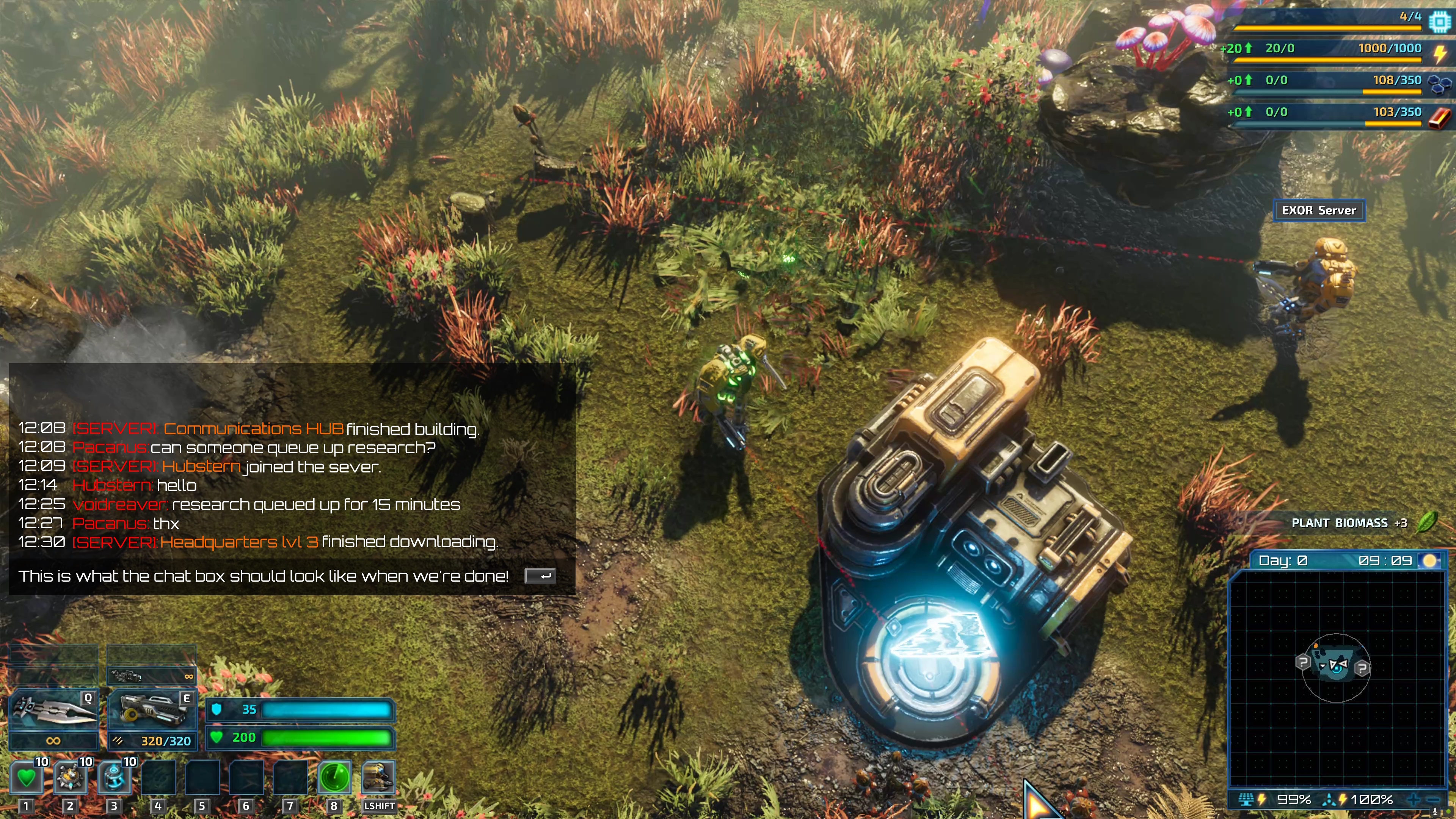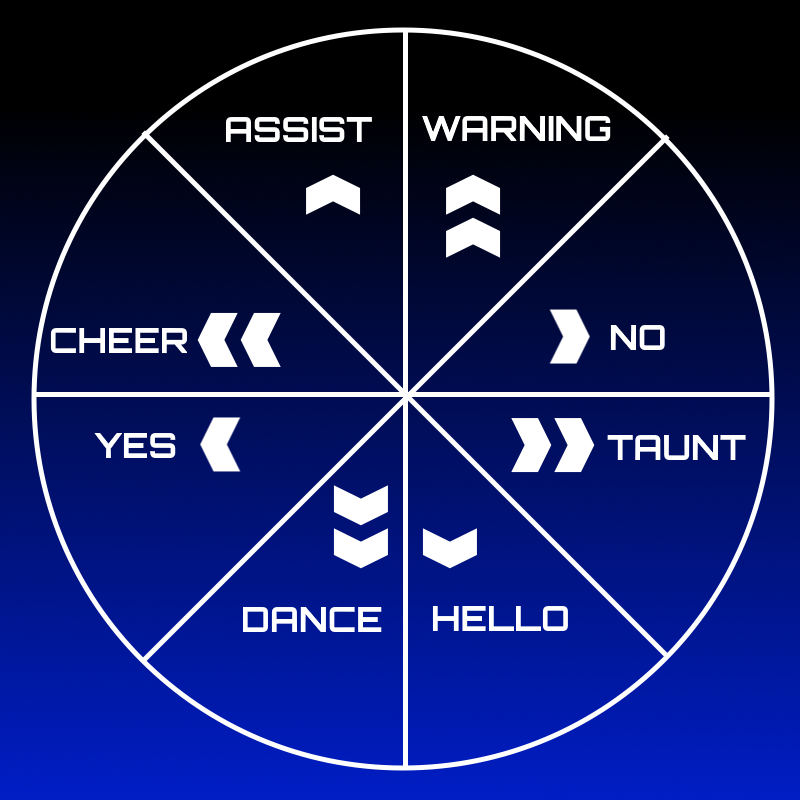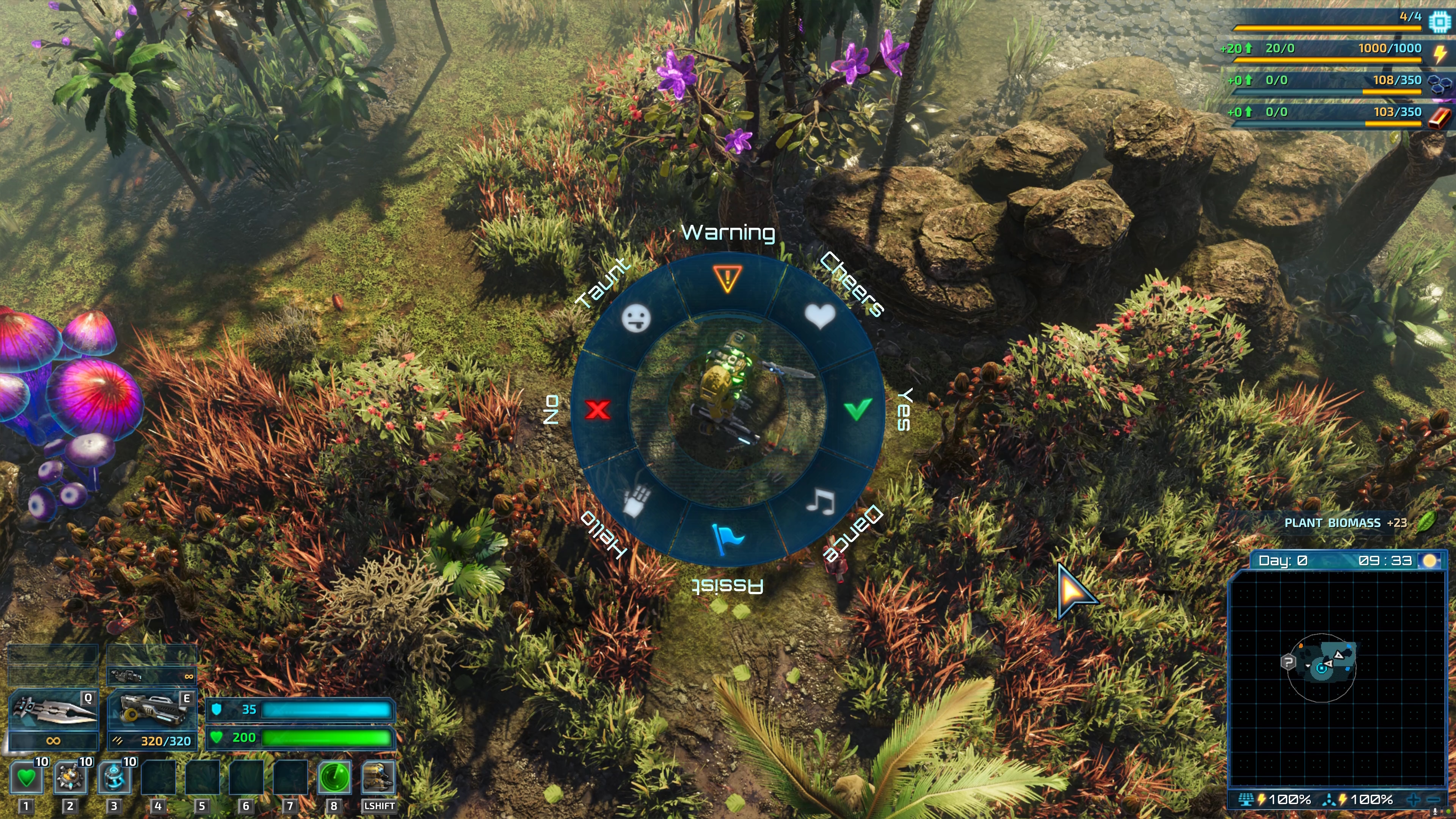
The Riftbreaker - voidreaver
Hello Riftbreakers!
We have just released a sizeable update for The Riftbreaker. It features all the improvements and optimizations we introduced during the preparations for the Heart of the Swamp expansion console launch. A very large portion of the adaptations we had to make to launch the game on other platforms is compatible with the PC build and will result in performance improvements - especially on machines with less than 16 GB of RAM. We have also introduced plenty of gameplay fixes and improvements.
We hope this update improves your experience with The Riftbreaker. The full changelog can be found here:
The Riftbreaker Maintenance Update, October 16th, 2024. EXE: 1018 DATA: 617 Changelog:
Changes:
- Reduced the number of building cubes spawned when building long wall sections, which should improve performance.
- After completing some objectives in the Fungal Forest Outpost the water surrounding your base should turn clean.
- Optimized OGG sound file playback mechanism. If you experienced sound stuttering or dialogues cutting off it should now be fixed.
- Added attack waves containing the enemies from the Fungal Forest biome to the Headquarters attack wave pool after the Heart of the Swamp storyline is completed.
- Optimized 'emissive' textures for many models by removing blank black areas, reducing memory and disk space usage.
- Reworked the 'Phirian attack' in-game event. Phirians now arrive as a group, coming from the edge of the map. Their strain and wave size depend on the difficulty level. The event is accompanied by new sound lines.
- Stregaros shield is now resistant to all types of damage, doesn't break immediately after the first shot.
- Player's repair drone has been buffed - it has longer range, travels faster and repairs buildings much quicker.
- Chainsaw movement speed penalty has been reduced.
- Replaced small bioanomaly models in all biomes with their new, regional variants.
- Buffed Cryo Sentry, Holo Decoy and Bioscanner Turret consumables - higher levels now have much better stats.
- Holo Decoy now has a bigger and stronger explosion on higher levels.
- Acid Cluster Grenade now has increased radius and added damage over time.
- Gas Grenade now has increased duration and damage on higher levels.
- Grenade now has a bigger splash damage radius on higher levels.
- Gravity Grenade now deals physical damage, increased area of effect and duration on higher levels.
- Sonic Grenade now has a bigger splash radius on higher levels.
- Mini Miners now get more HP on higher levels.
- Proximity, Cryo and Nuclear Mines now have a bigger splash damage radius on higher levels.
- The Antimatter Ball will no longer disappear outside the camera view.
- Acid, Cryo, Fire and Energy Trails now have increased damage trail lifetime on higher item levels at a cost of a bigger cooldown.
- Acid, Cryo, Fire and Energy Dash now have increased damage trail lifetime on higher item levels.
- Flamewave now has more range on higher levels.
- Repeater Rifle ammo consumption increased.
- Bouncing Blades ammo consumption increased.
- Reduced the strength of some camera shake effects.
- Added shooting sound for Minigun Towers.
- Changed shooting sounds for Laser Towers, as it used the same sound as the Flamer Tower.
- Reduced the size of the Rift Station minimap icon.
- Changed the layout of the Great Tree tile slightly to prevent unit navigation issues.
- Changed unit behavior to prevent them from walking over the Flammable Gas Vents.
- Added a 'cheat_remove_wave_units' command that will kill only the creatures that were spawned in the attack wave, allowing you to clear any blocked units without wiping the entire map.
- Tornados will now always cause enemies to turn to gibs to prevent the 'flying dead bodies' phenomenon.
- Traveling to other outposts is now blocked during the final Rift Station charging procedure.
- Added new objective markers - circles and arrows.
- Added Steel Floor to the Bioanomaly unlock pool. The item was present in the game, but was left out from the prize pool by mistake.
Fixes:
- Introduced many performance optimizations.
- Significantly reduced runtime memory usage.
- Fixed the game flow getting stuck if the canceroth lair was destroyed before the canceroth attack was defeated.
- The canceroth lair objective will start if the player reaches the canceroth lair before defeating the canceroth attack.
- The canceroth lair objective will be skipped if the canceroth lair is destroyed before the player reaches the canceroth lair.
- The canceroth attack may start sooner if the player progresses with other objectives faster to prevent out of order objective execution.
- Heart of the Swamp main campaign objective will now be removed after the campaign ending.
- Fixed the slow-spawning wingmite attack wave in the final wave of the Metallic Valley Survival Mode mission on Easy and Normal difficulty levels.
- Fixed some issues with the Metal Terror's "Manufacturing Plateau" familiarity mission objective flow.
- Fixed the Metal Terror storyline starting trigger. The DLC story will now start if you complete two scouting missions on other biomes OR if you set up a Cobalt Mining Outpost.
- Introduced some optimizations to the saving process. By reducing the amount of data copied during saving, the hiccup on save should be less noticeable and the saving process should be much quicker.
- You should no longer get announcements about the base being under attack when Sentry Turrets are being attacked and destroyed.
- Fixed an issue that prevented players from restoring options to default values in the options menu.
- Fixed an issue in Phirian sword attack that caused it to miss the player sometimes.
- Fixed the damage over time values in all variants of the Crystal Gun.
- Fixed the Firestorm event voice lines not matching the appropriate character avatars.
- Fixed issues with updating resource limits after an Outpost with resource storages is removed.
- Fixed an issue that caused the build mode selector to always appear in the top-left corner when using the gamepad.
- Fixed multiple issues with Liquid Compressors and Decompressors usage across multiple maps.
- Fixed issues with the menu navigation on the Custom Difficulty Screen.
- Fixed an issue that caused some units to get stuck while navigating through liquid pools.
- Fixed an issue that caused Mudroners to sometimes get stuck in one spot.
- Fixed an issue that caused some main menu localizations to overlap.
- Fixed a crash in lift.lua when the object you're trying to carry gets destroyed.
- Fixed hitboxes on the Weapon Modding screen.
- Fixed an issue that caused the mission flow to get stuck in the 'Destroy the Fungor Spawning Mound' mission.
- Fixed the achievement trigger for 'Indecisive.'
- Fixed collision boxes for the Alien Towers in the Metallic Valley biome.
- Fixed the achievement trigger for the 'Treasure Hunter" achievement.
- Fixed an issue that caused many sounds to play at once when loading into the game.
- Fixed several issues with minimap item visibility.
- Fixed an issue that prevented players from flipping pages when using a gamepad.
- Fixed multiple issues with the 'interact' button not working properly.
- Added missing resources to the global precache system - you should no longer experience stutters when encountering something in the game for the first time
- Fixed several issues with Power Well powerup HUD symbol visibility.
- All relevant stats for Mech Upgrades, Skills and Weapons should now be visible in the inventory screen tooltip.
- Fixed an issue that caused Power Rod Towers and HCM Launchers to reload ammo after loading a save file.
- Fixed the damage over time display in the inventory screen - it now displays that it is measured in seonds.
- Fixed GUI usability issues on the Orbital Scanner screen.
- Fixed multiple crash bugs.
- Fixed multiple GUI usability issues.






































